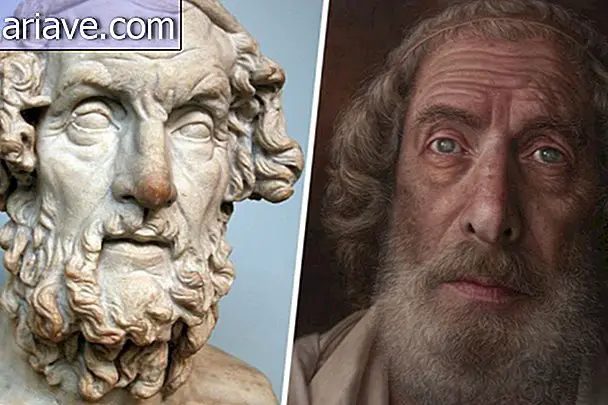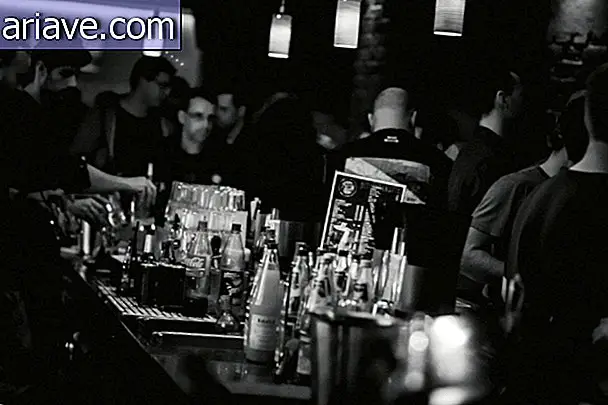Next stop: Peru - a country with beautiful landscapes and amazing cuisine.
Friday is Next Stop Day, and if you are one of those who delights in the culture of Latin American countries - our hermanos - the time has come to check out another destination not far from here. After passing through Uruguay, Chile and Argentina, we now landed in Peru.
The Republic of Peru - as it is officially known - is an ancient country. It is estimated that the first inhabitants arrived there some 15, 000 years ago. Communities began to develop on the west coast more than 5, 000 years ago and then began to explore what was inland.
In this scenario, the Inca Empire (which lived in the territory about 600 years ago) profoundly marked Peruvian culture. The city of Cusco, which was chosen as the capital of the Incas, is still one of the most important cities in the country. The empire was responsible for some of Peru's main temples and buildings - such as the mysterious fortress of Machu Picchu. But Peru goes far beyond the Andean ruins and, to know all that is extraordinary about that country, just follow me!
Naturally exuberant
Peru is the third largest country in South America, second only to Brazil and Argentina. And for those planning a trip to the country, the territory guarantees landscapes for all tastes: there you can find mountains, beaches, deserts and forests.
Most of the population is concentrated coast of the Pacific Ocean, where is Lima, which is the capital and largest city of the country. Located on the west coast, over a 2, 500-kilometer strip is the Nazca desert, originally inhabited by the Chimú - a culture that came to the region thousands of years ago. The desert accounts for only 10% of the country's land area, but is home to over half the population. It is also home to the famous and mysterious Nazca Lines, which were considered a UNESCO World Heritage Site in 1994.
Another natural beauty is the Amazon rainforest, which is well known to us Brazilians, and covers almost 60% of Peruvian territory. With an enviable flora and fauna, the forest is home to plants and animals that do not exist anywhere else on the planet.

The Andes, which form the second largest mountain range in the world, are also present in Peruvian territory. By their impressive height, the Incas believed that the Andes were gods. The mountains extend from north to south and can be seen from the country's coastline. Peru's highest point is Mount Huascarán, which has an incredible 6, 768 meters of altitude.
The country is also noteworthy for Lake Titicaca, which is located in southern Peru and is considered the largest lake in South America and the highest navigable lake in the world, as it is over 3, 800 meters from sea level. Finally, the Cerro Blanco dunes - which are in the Nazca desert - occupy second place among the highest in the world, measuring 1, 176 meters from the base to the highest point.
Culturally rich
With the arrival of the Spanish in 1532, native languages began to share space with Spanish. This caused the country to be marked by plurality because of the presence of several languages - such as Quechua and Aymara, of indigenous origin - which are still spoken in different parts of the country, especially in the Andes. Also counting on the languages spoken by the Amazonian communities, Peru has 43 native languages.

Since the pre-Hispanic period, music and dance have always occupied a fundamental place in Peruvian culture. Experts in the country's history believe the inhabitants of the Nazca desert were important musicians in the region. Using shells, reeds and animal bones, people developed different wind instruments. For this reason, the pan flute became one of the symbols of Peru.
The combination of diversity and folklore has resulted in artistic manifestations that blend indigenous expressions with Spanish influence. The Marinera is one of the best known typical Peruvian dances and has its roots in Spanish and Andean rhythms. In this and other traditional dances of the country, it is common to see women wearing dresses with puffing skirts that make the choreography even more beautiful.

Festivals are also part of Peruvian culture. The union of beliefs and customs gave rise to about 3, 000 popular festivals that are celebrated annually in Peru. Processions, rituals, carnivals and celebrations in honor of patron saints are some examples of the festivities that seek to express belief in God and respect for nature. Most of the Peruvian population expresses the Catholic faith, which is another of the legacies left by the Spanish.
Gastronomically varied
Peruvian cuisine is a reflection of national identity, that is, it brings together the multiple cultures that are part of the history and formation of Peru - which is a feature that can be observed in different aspects of the country. This mix of influences has made Peruvians experts in experimenting with other flavors, harmonizing aromas and exploring new alternatives when it comes to gastronomy.
The geographical diversity - which has about 90 different microclimates, making Peru one of the most biodiverse countries in the world - and the talent of local chefs has made Peruvian cuisine gaining worldwide recognition. Proof of this is the fact that Lima has already received the title of Gastronomic Capital of America.

For tourists who land in the country, tasting the famous ceviche (considered part of Peru's cultural heritage) is a must. It basically consists of a raw fish preparation marinated in lime juice that has its flavor accented with pepper or other seasonings. To accompany the dish, preparations are served with corn or potato - which are two options that can not be missed in Peruvian cuisine. In addition to ceviche, pisco sour is considered the national drink of Peru. The drink is made from pisco - which is a grape brandy produced in the country - lemon juice, egg white, bitter and ice.
Handcrafted interesting
Those who are planning to go through Peru can not miss the traditional crafts. The pieces produced by local artisans reflect the culture of the people and still demonstrate the incredible skills that have been passed down from generation to generation throughout history.
From the pre-Hispanic period, Peruvian handicrafts were marked by the discovery of weaving and working with gourds, woods, stones, precious metals and even clay. This ancestral heritage can be found to this day in the coastal region, in the mountains and in the cities located in the forest.

Silver filigree, carved gourds, Ayacuchana altars, Huamanga wood and stone carvings, Chulucanas ceramics and Monsefú ponchos are some examples of Peruvian artisan production that should be admired by anyone visiting the country. .
More curiosities
- The Peruvian currency is the New Sun and entered circulation in 1991;
- In literature, Mario Vargas Llosa is the biggest name in Peru. Born in Arequipa and currently 78 years old, the writer had his work recognized with the Nobel Prize for Literature in 2010;
- Lima, the Peruvian capital, was once one of the most powerful cities in South America, but declined when the Spanish created the Viceroyalty of the Rio de la Plata;

- The oldest university in the Americas is called Universidad Nacional Mayor de San Marcos. The institution is in Peru and was founded on May 12, 1551;
- Peru is one of the world's richest countries in natural resources - it is the sixth largest gold producer on the planet and it is still possible to find silver, copper, zinc, lead, iron and oil and natural gas reserves in the territory;
- In the New Year, Peruvians follow the tradition of giving friends and family yellow underwear;
- There are over 55 varieties of maize of all colors and 3, 000 different types of potato, which originates in Peru. The country also deserves prominence in coffee production, as it is the fifth largest producer of arabica coffee in the world;
- Another traditional and unusual dish in the country is cuy, which is guinea pig meat that can be served fried or roasted;

- Peru is a favorite destination for surfers, as Chicama and Mancora are places known for their incredible waves;
- The Cotahuasi Canyon, located in the Arequipa region, is considered one of the deepest in the world. The formation is 3, 535 meters deep, which is twice the famous Grand Canyon in the United States;
- In Peru there are 1, 625 types of orchids, of which 425 grow naturally in the region of Machu Picchu. And of course we can't forget about llamas, alpacas and vicuñas, which are commonly found in the country.











